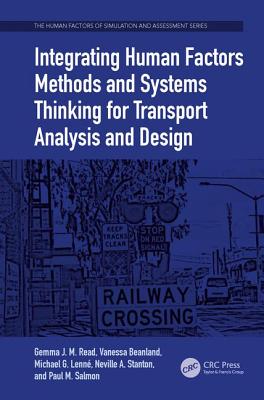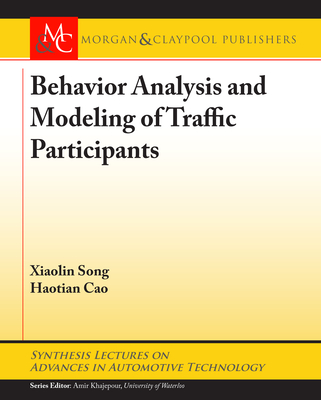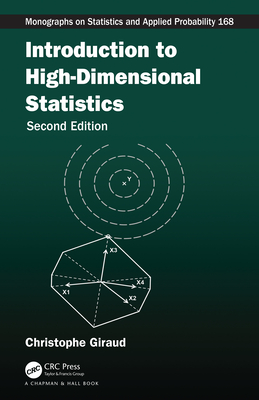Integrating Human Factors Methods and Systems Thinking for Transport Analysis and Design
暫譯: 整合人因方法與系統思維於交通分析與設計
Read, Gemma J. M., Beanland, Vanessa, Lenne, Michael G.
- 出版商: CRC
- 出版日期: 2017-07-26
- 售價: $3,540
- 貴賓價: 9.5 折 $3,363
- 語言: 英文
- 頁數: 314
- 裝訂: Quality Paper - also called trade paper
- ISBN: 1138749230
- ISBN-13: 9781138749238
海外代購書籍(需單獨結帳)
商品描述
商品描述(中文翻譯)
全球各地的政府和道路安全機構已經引入或正在考慮「安全系統」策略,這是對道路系統中不同元素對道路安全結果貢獻的長期被忽視的認識。人因因素方法在這裡扮演著重要角色,既在於將道路系統概念化為一個複雜的社會技術系統,也在於提供實際的方法來支持真正基於系統的對策。本書展示了將當代基於系統的人因方法與現代駕駛評估方法(如車輛儀表和駕駛模擬)整合的潛力,以理解和提升現代道路運輸系統中的表現。本書概述了為什麼在這些系統的設計和運作方式上需要根本性的範式轉變,並展示了各種被接受的人因方法如何成功應用於道路運輸,以徹底改變對策設計過程。這些人因方法的實際應用針對一個長期存在的道路和鐵路安全問題:鐵路平交道,這是道路和鐵路系統交匯的地方。本書的最後一章強調了人因方法在減少道路創傷方面的實用性,並討論了該方法的未來應用。
作者簡介
Dr Gemma Read
Gemma Read, PhD, is a Research Fellow at the Centre for Human Factors and Sociotechnical Systems at the University of the Sunshine Coast. She completed her PhD in human factors at the Monash University Accident Research Centre in 2015, focused on the development of a design toolkit for use with cognitive work analysis. Prior to this she completed a postgraduate diploma in psychology and undergraduate degrees in behavioural science and law. Gemma has over ten years' experience applying human factors methods in transportation safety, predominantly within the area of transport safety regulation.
Dr Vanessa Beanland
Vanessa Beanland, PhD, is a Research Fellow in the Centre for Human Factors and Sociotechnical Systems at University of the Sunshine Coast. She completed her PhD in experimental psychology in 2011 and previously worked as a Lecturer at the Australian National University and a Research Fellow at Monash University Accident Research Centre. Vanessa currently holds an Australian Research Council Discovery Early Career Research Award in the area of driver behaviour and has more than eight years' research experience encompassing applied psychology and human factors in transport.
Professor Michael Lenné
Mike Lenné, PhD, is an Adjunct Professor (Research) at Monash University Accident Research Centre. He obtained a PhD in human factors psychology in 1998, and has since worked in a number of research roles in university and government settings, all with a focus on improving transport safety. For seven years he led the human factors research team at Monash University Accident Research Centre, and in 2014 he became a Professor in human factors. In late 2014 his unique expertise in human factors and research translation were recognised through the creation of the role of Chief Scientific Officer, Human Factors at Seeing Machines Ltd. Mike has dedicated his research career to measuring human operator performance in transport settings and in developing and evaluating measures to improve safety.
Professor Neville Stanton
Neville Stanton, PhD, DSc, is a Chartered Psychologist, Chartered Ergonomist and Chartered Engineer. He holds the Chair in human factors engineering in the Faculty of Engineering and the Environment at the University of Southampton. He has degrees in occupational psychology, applied psychology and human factors engineering. His research interests include modelling, predicting, analysing and evaluating human performance in systems as well as designing the interfaces and interaction between humans and technology. Professor Stanton has worked on design of automobiles, aircraft, ships and control rooms over the past 30 years, on a variety of automation projects. He has published 35 books and over 270 journal papers on ergonomics and human factors. His work has been recognised through numerous awards including the Hodgson Prize, awarded to him and his colleagues in 2006 by the Royal Aeronautical Society for research on design-induced, flight-deck, error. He has also received numerous awards from the Institute of Ergonomics and Human Factors in the UK and in 2014 the University of Southampton awarded him a Doctor of Science for his sustained contribution to the development and validation of human factors methods.
Professor Paul Salmon
Paul Salmon, PhD, is a Professor in human factors and is the creator and director of the Centre for Human Factors and Sociotechnical Systems at University of the Sunshine Coast. He currently holds an Australian Research Council Future Fellowship in the area of transportation safety and leads major research programs in the areas of road and rail safety, cybersecurity, and led outdoor recreation. His current research interests include accident prediction and analysis, distributed cognition, systems thinking in transportation safety and healthcare, and human factors in elite sports and cybersecurity. Paul has co-authored 11 books, over 150 journal articles, and numerous conference articles and book chapters. He has received various accolades for his contributions to research and practice, including the UK Ergonomics Society's President's Medal, the Royal Aeronautical Society's Hodgson Prize for best research and paper, and the University of the Sunshine Coast's Vice Chancellor and President's Medal for Research Excellence. In 2016, Paul was awarded the Australian Human Factors and Ergonomics Society Cumming Memorial Medal for his research contribution.
作者簡介(中文翻譯)
**Dr. Gemma Read**
Gemma Read 博士是陽光海岸大學人因工程與社會技術系統中心的研究員。她於2015年在莫納什大學事故研究中心完成了人因工程的博士學位,專注於開發一個用於認知工作分析的設計工具包。在此之前,她完成了心理學的研究生文憑以及行為科學和法律的本科學位。Gemma 在交通安全領域應用人因工程方法已有超過十年的經驗,主要集中在交通安全法規方面。
**Dr. Vanessa Beanland**
Vanessa Beanland 博士是陽光海岸大學人因工程與社會技術系統中心的研究員。她於2011年完成了實驗心理學的博士學位,之前曾在澳大利亞國立大學擔任講師以及在莫納什大學事故研究中心擔任研究員。Vanessa 目前持有澳大利亞研究委員會的發現早期職業研究獎,專注於駕駛行為,並擁有超過八年的應用心理學和交通人因工程的研究經驗。
**Professor Michael Lenné**
Mike Lenné 博士是莫納什大學事故研究中心的兼任教授(研究)。他於1998年獲得人因心理學博士學位,並在多個大學和政府機構的研究角色中工作,專注於改善交通安全。七年來,他領導了莫納什大學事故研究中心的人因研究團隊,並於2014年成為人因學教授。在2014年底,他在Seeing Machines Ltd.創建了人因學首席科學官的角色,以表彰他在人體工學和研究轉化方面的獨特專業知識。Mike 將他的研究生涯致力於測量交通環境中的人類操作員表現,以及開發和評估改善安全的措施。
**Professor Neville Stanton**
Neville Stanton 博士,DSc,是一位特許心理學家、特許人因工程師和特許工程師。他在南安普敦大學工程與環境學院擔任人因工程的講座教授。他擁有職業心理學、應用心理學和人因工程的學位。他的研究興趣包括建模、預測、分析和評估系統中的人類表現,以及設計人類與技術之間的界面和互動。Stanton 教授在過去30年中參與了汽車、飛機、船舶和控制室的設計,涉及各種自動化項目。他已出版35本書籍和超過270篇有關人體工學和人因工程的期刊論文。他的工作獲得了多項獎項的認可,包括2006年由英國皇家航空學會頒發的霍奇森獎,以表彰他和他的同事在設計引起的飛行甲板錯誤方面的研究。他還獲得了英國人體工學與人因學會的多項獎項,並於2014年獲得南安普敦大學頒發的科學博士學位,以表彰他對人因方法的發展和驗證的持續貢獻。
**Professor Paul Salmon**
Paul Salmon 博士是人因學教授,也是陽光海岸大學人因工程與社會技術系統中心的創始人和主任。他目前持有澳大利亞研究委員會的未來獎學金,專注於交通安全,並領導道路和鐵路安全、網絡安全以及戶外休閒等領域的主要研究計劃。他目前的研究興趣包括事故預測和分析、分佈式認知、交通安全和醫療保健中的系統思維,以及精英運動和網絡安全中的人因工程。Paul 共同撰寫了11本書籍,超過150篇期刊文章,以及多篇會議文章和書籍章節。他因對研究和實踐的貢獻而獲得各種榮譽,包括英國人體工學學會的會長獎章、英國皇家航空學會的霍奇森獎最佳研究和論文獎,以及南安普敦大學的副校長和校長研究卓越獎章。2016年,Paul 獲得澳大利亞人因與人體工學學會的卡明紀念獎,以表彰他的研究貢獻。













![[精準活用祕笈] 超實用!ChatGPT 與 Excel 必備省時函數的巧妙運用:利用 AI 提高數據整理與統計運算分析-cover](https://cf-assets2.tenlong.com.tw/products/images/000/195/299/medium/9786263336155.jpg?1697686748)
















